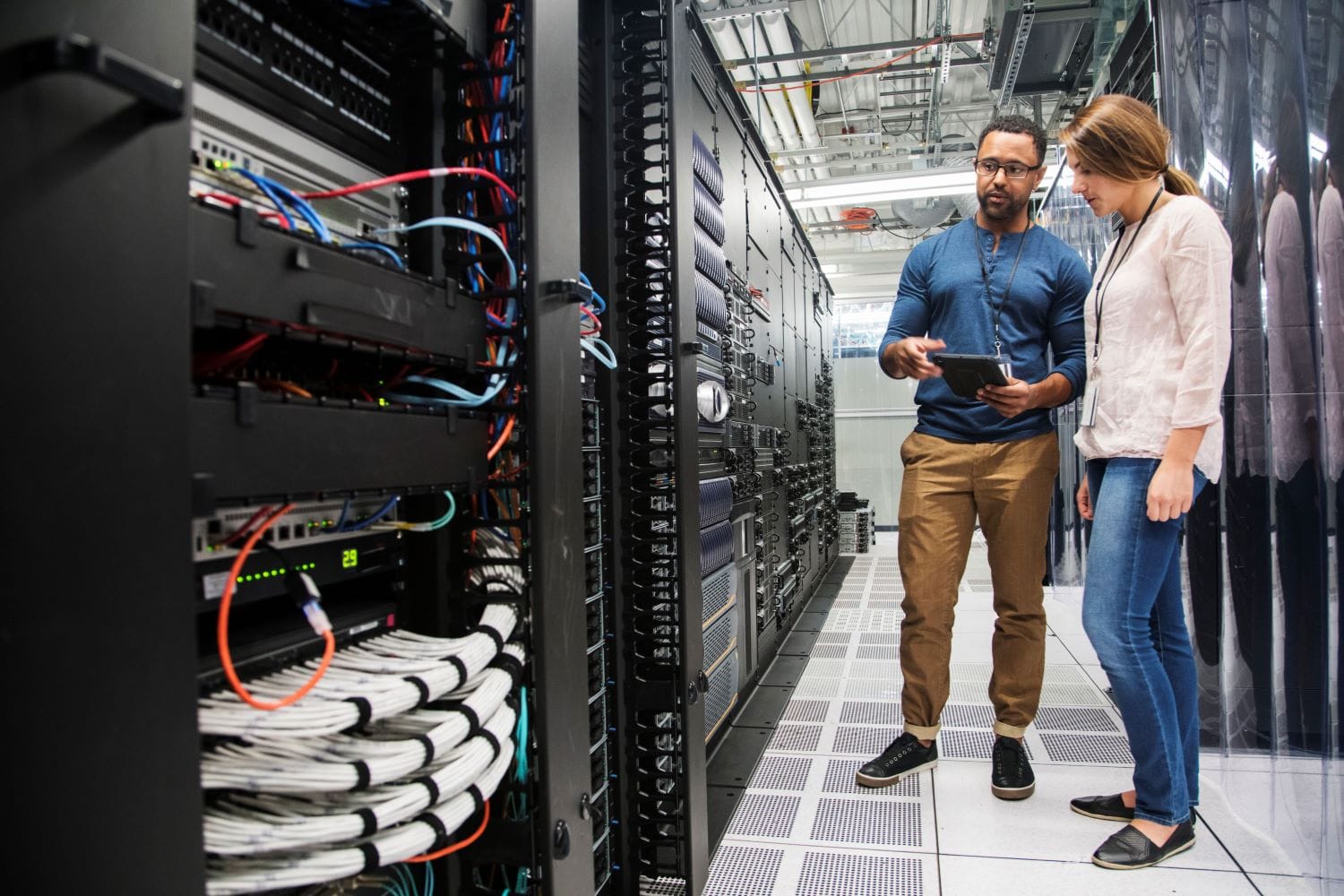For this year 2025 that we just started, electronic security will focus on enhancing security, improving efficiency, and encouraging collaboration among teams. While emerging technologies like AI will continue to be very important, the priority will be sustainable investments in governance, risk management, and compliance.
1. The adoption of hybrid cloud will gain momentum
As organizations take a more strategic approach to deploying cloud solutions in their environments, decision-makers will prioritize hybrid systems. They will seek the best ways to centrally monitor remote locations from an on-premise head-end system and reduce onsite maintenance work with lightweight, rapidly deployable hybrid cloud systems. They will want to modernize their video or access control systems without dismissing their existing technology investments. Those with fully cloud-based deployments may also want to optimize data processing and storage costs or facilitate broader integrations with third parties using on-premise infrastructure.
Open, unified, SaaS (Software as a Service) solutions compatible with hybrid cloud environments will offer a more flexible option. In addition to adopting flexible deployment models, organizations will be able to combine video, access control, intrusion, intercom, and other sensors from various manufacturers. They will also be able to connect existing infrastructure for cloud availability and install new devices at their own pace. Cloud-managed devices will be key for organizations wanting to transition their existing hardware to the cloud. They will save time in deploying systems and avoid the costs of replacing incompatible cameras or access control hardware, facilitating the transition to the cloud.
2. AI adoption will balance innovation with responsible use
While nearly half of security decision-makers (42%) are interested in AI-based solutions, concerns about privacy, ethics, and potential data bias remain high. In response, companies are placing greater emphasis on adopting AI responsibly and are seeking partners who prioritize the ethical development of AI and provide transparent governance practices. The 2025 Electronic Security Trends Report by Genetec shows that while the potential of AI to improve operational efficiency and accelerate data analysis is widely recognized, organizations are also implementing AI governance protocols to ensure it is used safely and responsibly.
Responsible AI practices include monitoring for bias, ensuring data integrity, and complying with relevant data privacy regulations. AI-based security analytics, for example, can streamline video searches, enhance situational awareness, and improve response times, but organizations demand that these tools operate transparently and prioritize data protection. Providers committed to responsible AI practices will have a significant advantage as companies seek partnerships with ethical and trustworthy AI providers.
3. Organizations will prioritize regulatory compliance

As threats to cybersecurityCybersecurity solutions are essential in the digital era… and regulatory requirements grow, compliance has become a primary concern for security leaders. Recent data indicates that the cost of a data breach reached a record high in 2024, underlining the need for robust compliance measures. Key regulations like GDPR, NIS2, and HIPAA are shaping how organizations approach data protection, especially as more security systems rely on interconnected networks and cloud storage.
In 2025, organizations will focus on strengthening cybersecurity hygiene practices, improving data encryption, and aligning with international and industry-specific regulatory requirements. This commitment extends to partnering with providers who have the technical expertise and resources to ensure compliance across various security systems. Organizations subject to strict regulations are not only prioritizing data protection but also investing in compliance-focused solutions to avoid penalties and protect their reputation.
4. Interdepartmental collaboration will enhance security operations
As workforce shortages and budget constraints persist, collaboration among security, IT, facilities, and human resources departments will be essential for effective security management. Organizations will implement workforce optimization tools that empower team members from all departments to take a more active role in security tasks, streamline workflows, and eliminate bottlenecks.
Digital evidence management tools simplify the processes of collecting, managing, reviewing, and collaborating on investigations, while workflow management software centralizes information to enhance communication through task assignment, resource management, and reporting and auditing. By equipping departments with greater information and autonomy, organizations can further reduce stress on security teams and improve operational effectiveness. With these solutions, team members—regardless of their role or location—can take greater initiative in performing tasks, increasing productivity and overall organizational performance.
5. Stakeholders will demand more from service providers
The choice of electronic security solutions is no longer the sole responsibility of security professionals. IT, SecOps, and facilities teams are increasingly involved in decision-making processes.
Each group brings its own challenges, requirements, and priorities:
- Security professionals focus on streamlining response and investigation tasks.
- IT teams emphasize data and network protection and maintenance efficiency.
- SecOps teams prioritize cybersecurity, process automation, and data optimization.
- Facilities teams and other stakeholders seek streamlined operations and actionable business insights.
This shift means that end users will expect more from service providers, including channel partners, consultants, and technology vendors. Providers will need to demonstrate comprehensive knowledge of cybersecurity, operational efficiency, and data management while offering consistent guidance to meet the diverse needs of stakeholders. By fostering strong partnerships, service providers can add value across multiple stages of the deployment lifecycle, reinforcing security operations and the practical implementation of business intelligence.

